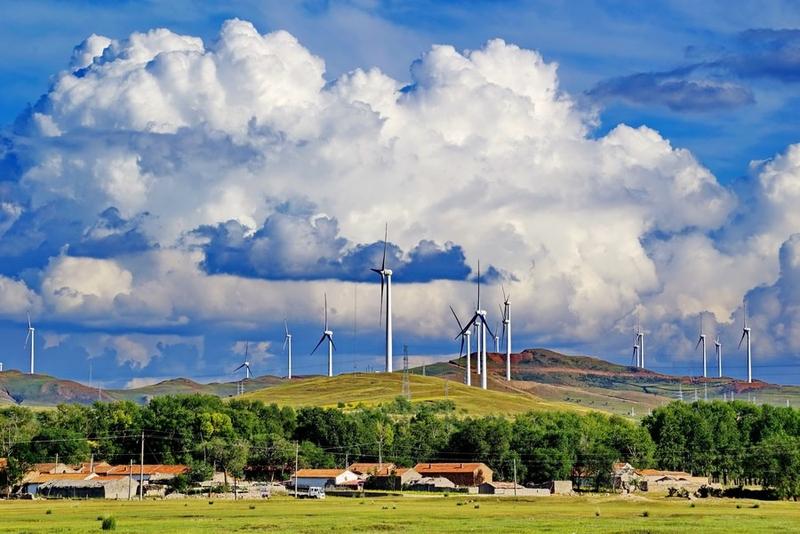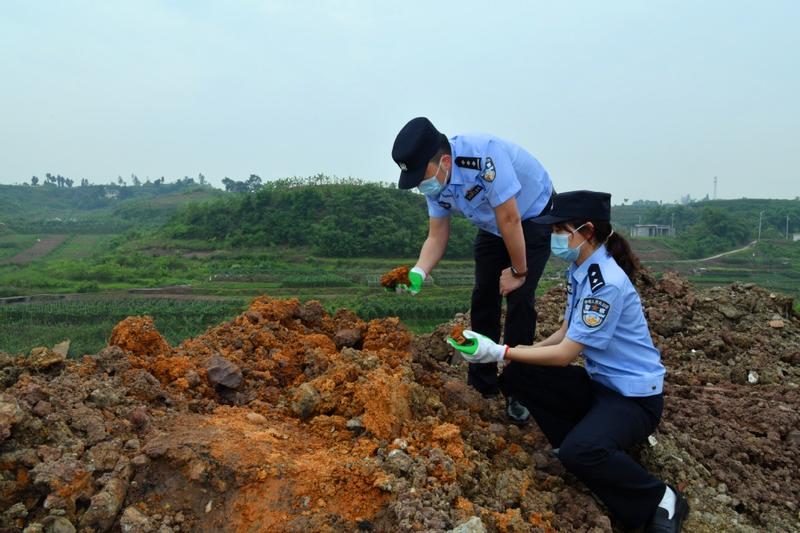 The file photo shows a wind power plant in Zhangjiakou, North China's Hebei province. (PHOTO / XINHUA)
The file photo shows a wind power plant in Zhangjiakou, North China's Hebei province. (PHOTO / XINHUA)
China's environmental protection endeavors have seen sweeping, historic and transformative changes, thanks to greater efforts than ever from central authorities to promote an ecological civilization, said Zhai Qing, vice-minister of ecology and environment.
There has been unprecedented achievement in the country's environmental protection work, he told a news conference held on Friday on the sidelines of the ongoing 20th National Congress of the Communist Party of China.
"In the past 10 years, China has on average managed to support an annual economic growth of 6.6 percent, with a yearly increase of 3 percent in energy consumption," he said.
Zhai highlighted the significant drop in the density of PM2.5 particulate matter as one example of China's remarkable environmental improvement.
Last year, major cities across China saw their average PM2.5 concentration fall to 30 micrograms per cubic meter, compared with 46 mcg per cu m in 2015, said Zhai Qing, vice-minister of ecology and environment
Last year, major cities across the country saw their average PM2.5 concentration fall to 30 micrograms per cubic meter, compared with 46 mcg per cu m in 2015, he noted.
"China has been the nation with the fastest progress in air quality improvement," he said.
With 84.9 percent of its surface water reaching Grade III quality or above last year, he said, the quality of China's aquatic environment has become very close to the levels seen in developed states.
The country has a five-tier water quality system for surface water, with Grade I the best.
Zhai said China has so far transformed 18 percent of its land into various protected areas as it strives to improve a nature reserve system composed mainly of national parks.
Following a series of major projects for biodiversity conservation, over 300 rare and endangered wild animals and plants have seen their wild populations recover and grow, he continued.
ALSO READ: Mountains rise to ecoprotection role
The vice-minister also noted the solid steps China has taken in its green, low-carbon and circular transition.
Carbon dioxide emissions per unit of GDP in the country last year dropped 34.4 percent from the 2012 level, he said. The share of coal use in its primary energy mix stood at 56 percent in 2021, compared with 68.5 in 2012.
China now outpaces all other countries in terms of renewable energy development and the production and sale of new energy vehicles, Zhai said.
"Green has gradually become the salient background of the nation's high-quality development," he said.
 Police officers inspect soil with dumped solid waste in Chongqing's Beibei district last month. (PHOTO PROVIDED TO CHINA DAILY)
Police officers inspect soil with dumped solid waste in Chongqing's Beibei district last month. (PHOTO PROVIDED TO CHINA DAILY)
Inspection campaign
The central ecological and environmental protection inspection campaign has played a key role in addressing some critical and deeply-rooted environmental problems in China, Zhai said.
The campaign, promoted and spearheaded by the central leadership, was piloted in late 2015 and has since been carried out across 31 provincial-level regions in China, as well as some government departments and State-owned enterprises, he said on the sidelines of the 20th National Congress of the Communist Party of China.
The first round of the inspection had completed 96 percent of its nearly 3,300 pre-designated tasks. The initial phase of the second round, which is ongoing, has identified about 1,230 rectification tasks.
So far, inspection teams have handled 287,000 complaints on environmental problems from the public during the campaign, and 286,000 of them have been settled or partially solved.
READ MORE: China pushes for post-2020 global biodiversity framework



